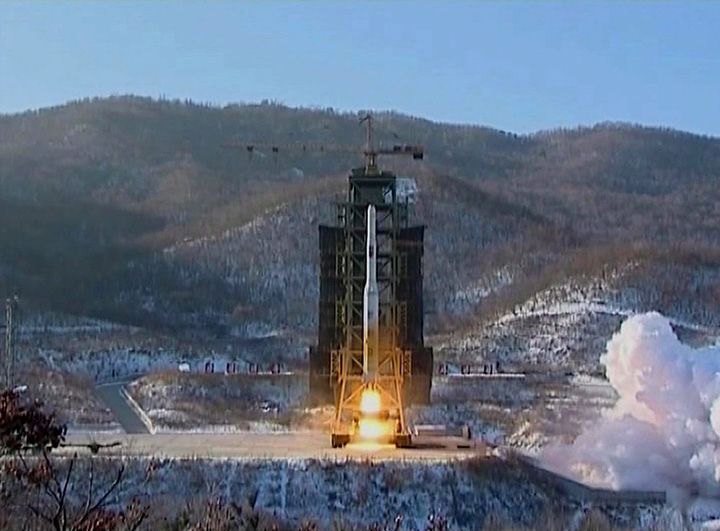SEOUL, Korea, Republic Of – Weeks after its fourth nuclear test, North Korea announced plans Tuesday to launch an Earth observation satellite on a rocket later this month, in what critics see as a covert test of banned technology for a ballistic missile that could strike the U.S. mainland.

An official at the London-based International Maritime Organization said North Korea declared that the launch would be conducted between Feb. 8 and 25, between 7 a.m. and noon Pyongyang time. The official spoke on condition of anonymity because she hadn’t been authorized to speak publicly yet.
U.N. deputy spokesman Farhan Haq said North Korea also informed the International Civil Aviation Organization and the International Telecommunication Union of the planned satellite launch.
“Right now, we’re carefully monitoring developments and are in close touch with the interested parties and the international organizations,” Haq said at U.N. headquarters in New York.
READ MORE: North Korea’s H-bomb test met with skepticism from White House, condemnation from UN
The declaration, which is meant to warn civilians, shipping and aircraft in the area about the rocket and falling debris, follows North Korea’s claim last month to have tested a hydrogen bomb, the country’s fourth nuclear test. It will be seen as a snub by North Korea of its only major ally, China, whose representative for Korean affairs landed in Pyongyang for talks on Tuesday.
The International Telecommunication Union said North Korea also informed its Geneva office of its intention to launch a Kwangmyongsong (Bright Star) -type Earth observation satellite with a four-year operational life. But the ITU’s U.N. representative, Gary Fowlie, said not enough technical information had been supplied to register the planned launch in its Master International Frequency Register.
A South Korean official, who spoke on condition of anonymity because of office rules, said Seoul was also informed of the plans, and estimated that the first stage of the rocket would fall off the west coast of South Korea, more debris would land near the South’s Jeju Island, and the second stage would land off the Philippines’ east coast.
North Korea’s last long-range rocket launch, in December 2012, was seen as having successfully put the country’s first satellite into orbit after a string of failures. The North also told international agencies before that launch of its plans. Each new rocket launch improves North Korea’s missile technology, which is crucial for its goal of developing a nuclear-armed missile capable of hitting the U.S. mainland.
READ MORE: U.S. puts pressure on China to help with N. Korea sanctions
North Korea, an autocracy run by the same family since 1948, is estimated to have a handful of crude nuclear devices and an impressive array of short- and medium-range missiles, but it closely guards details about its nuclear and missile programs. This means there is considerable debate by outsiders about whether it can produce nuclear bombs small enough to place on a missile, or missiles that can reliably deliver their bombs to faraway targets.
North Korea has spent decades trying to develop operational nuclear weapons. It calls its rocket launches satellite missions, but the U.N., the United States, South Korea and others say they are meant to test ballistic missile technology. The U.N. Security Council prohibits North Korea from nuclear and ballistic missile activity.
The North’s Jan. 6 nuclear test has led to another push in the U.N. to tighten sanctions, something that followed North Korea’s 2012 rocket launch and its 2013 third nuclear test. The North followed that test with an escalating campaign of bombast that included threats to fire nuclear missiles at the United States and South Korea.
North Korea has said that plutonium and highly enriched uranium facilities at its main Nyongbyon nuclear complex are in operation and that its scientists have improved “the levels of nuclear weapons with various missions in quality and quantity.”
But just what is happening at Nyongbyon is unclear. North Korea booted out international inspectors in 2009, and independent assessments by outside experts since then have been spotty.
—
Associated Press writers Foster Klug in Seoul, South Korea, and Edith M. Lederer at the United Nations contributed to this report.



Comments